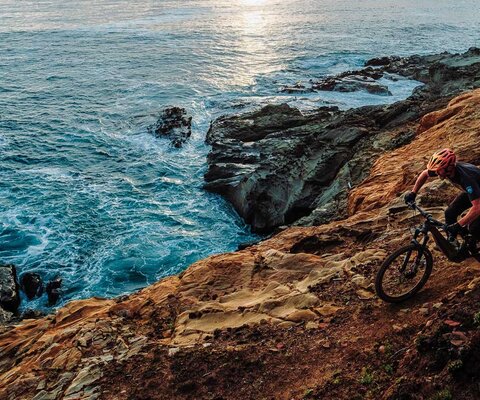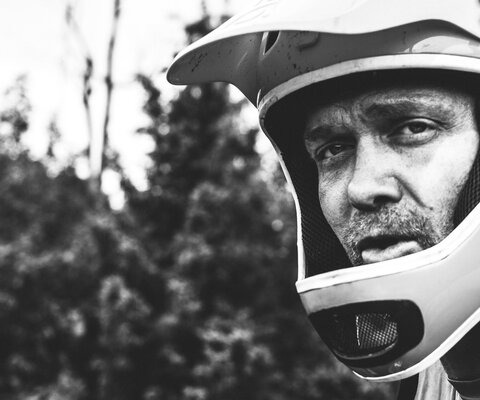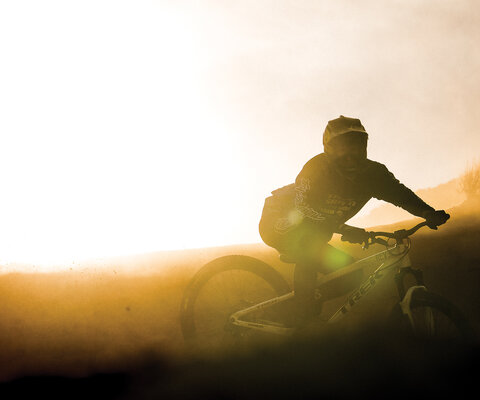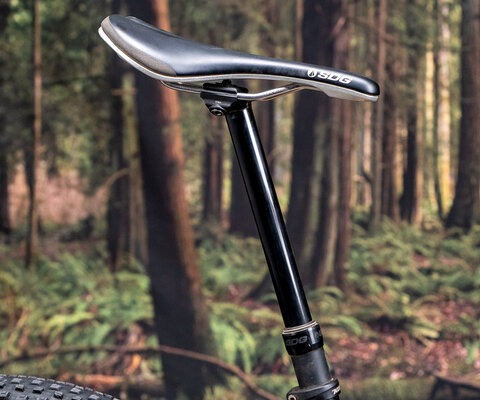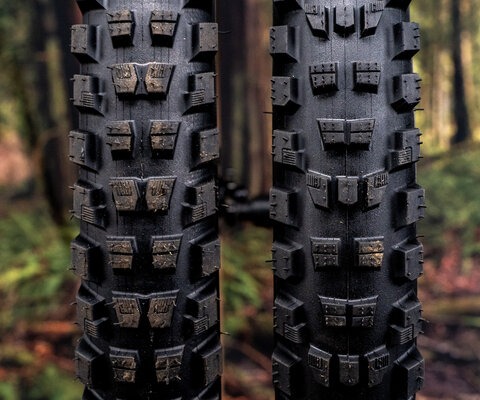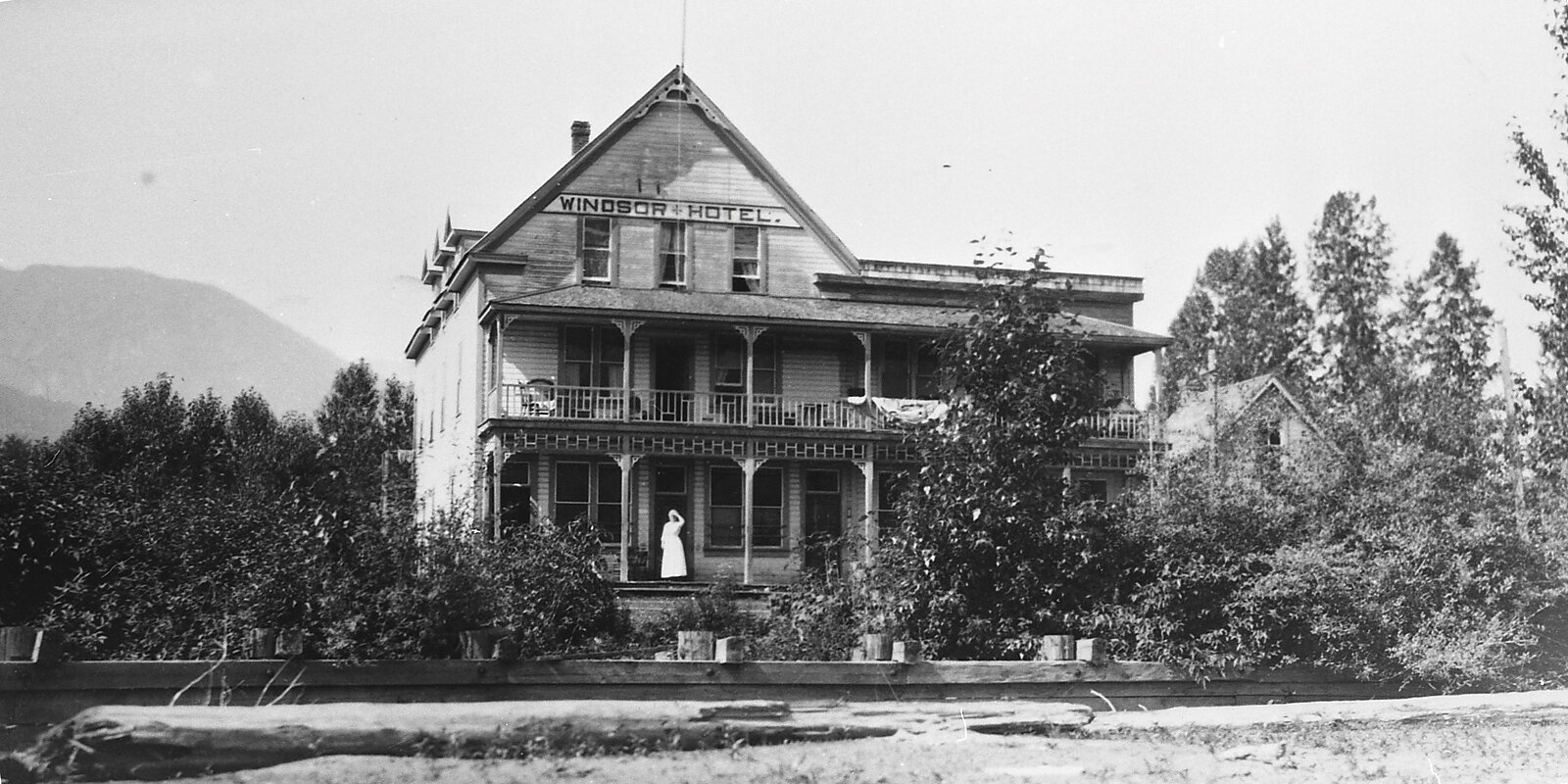
Backcountry Haunt The Legend of Alice Jowett and the Windsor Hotel
Words by Elladee Brown | Photos by Anne Keller
My childhood friend from Nakusp, Nicole Daney, likes to tell a story about the time the lights suddenly went out at Trout Lake’s old Windsor Hotel. As a kid, she cleaned rooms there in the ‘80s.
Huddled around the front desk in the pitch-black, her fellow cleaners, too spooked to venture upstairs, urged Nicole to investigate.
“You go,” they whispered to her through the darkness, “It’s your granny!”
Without hesitation, she tiptoed up the creaky wooden staircase to the third floor and flipped the breaker, restoring light again.
It wasn’t the first time Nicole’s mischievous great-great-grandmother, Alice Jowett, former owner of the Windsor, had made her presence known. The 127-year-old hotel in Trout Lake, one of British Columbia’s oldest, was her pride and joy. Eventually, it became her legacy.
Five hours north of Spokane, Washington, Trout Lake the town lies at the north end of its namesake, among towering forests and snow-covered peaks. The Selkirk and Monashee Mountains dominate the area, and the Lardeau River carves a southeasterly path from town to its confluence with the Duncan. This is no ordinary wilderness. It’s the world’s only inland temperate rainforest, a lush tapestry of ancient timber fed by the constant flow of moisture over the Columbia Mountains from the Pacific Ocean.
Like Nicole, my own connection to this area runs deep. I grew up in the small town of Nakusp, British Columbia, on the shores of the Arrow Lakes—just 80 kilometers southwest of Trout Lake. As a kid, we’d visit my dad at remote logging camps, pick the infamous huckleberries and, in the fall, gather firewood for the long winter. Even through an adolescent lens, Trout Lake vibed unique to me. Real-life locals were seemingly mythical characters in a backcountry paradise.
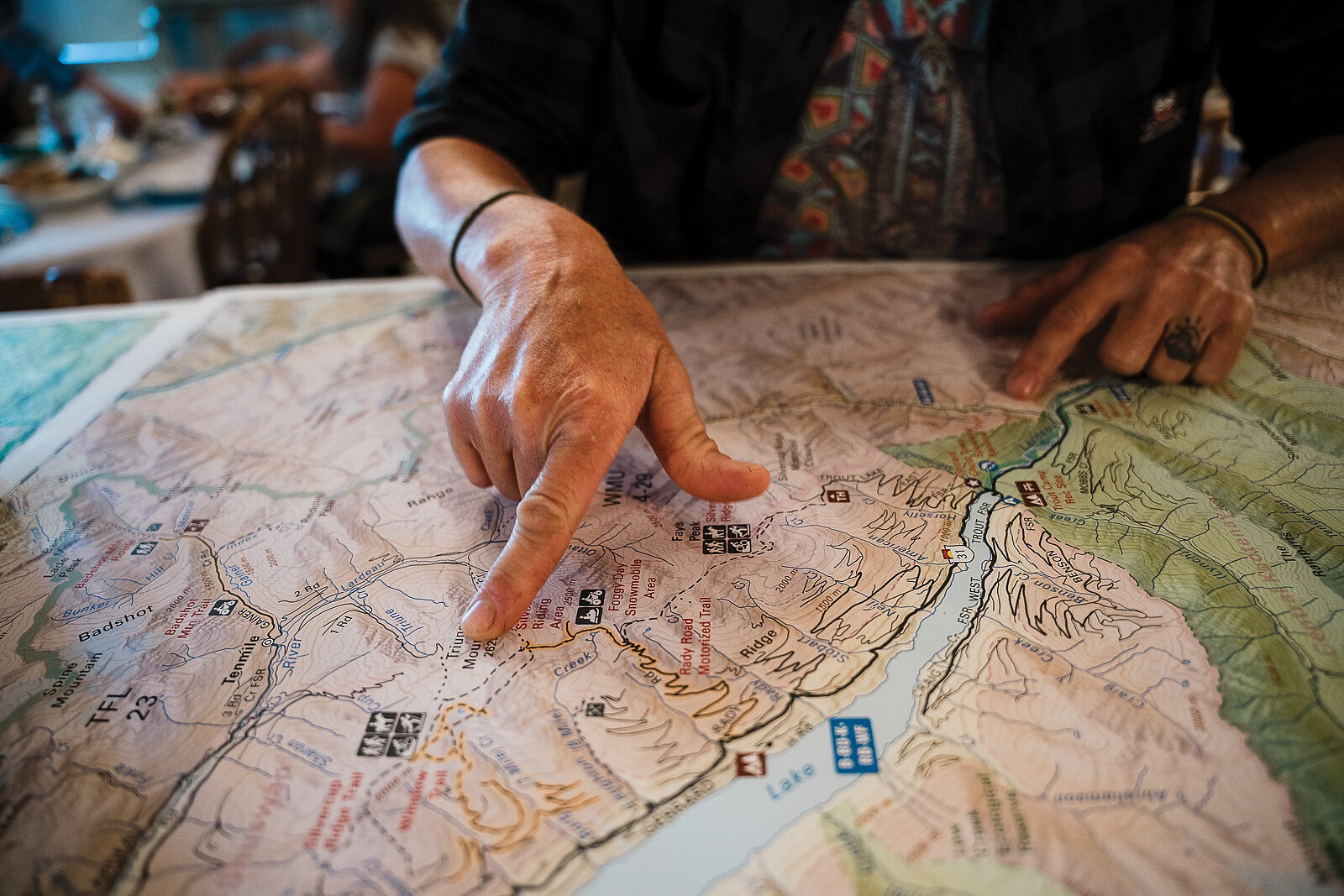
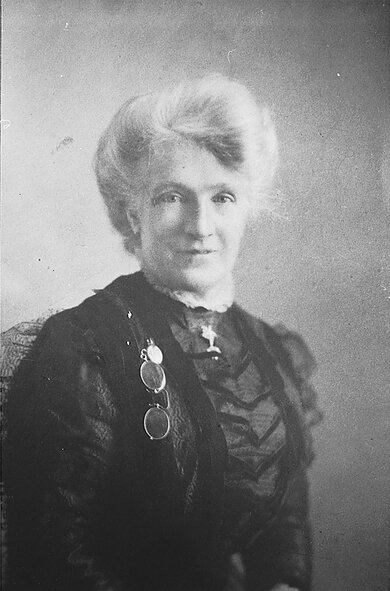
For millennia, before it was called Trout Lake, it was the domain of the Sinixt First Nations, an Interior Salishan Peoples whose traditional territory lies in the Columbia Mountains, spanning from north of Revelstoke down to modern-day Washington state. Classified as “complex foragers”, with highly developed social organization, they relied on foraging for food as opposed to farming, with salmon being their staple. They lived in pit houses in the winter and tule mat lodges in the summer. Some of the oldest pit houses in North America have been found here.
The discovery of gold and silver brought scores of settlers here, and colonial land boundaries pitted nations against each other regarding their territories and treaties. This continues into the current day. The Sinixt were falsely declared extinct by the Canadian Government in 1956, just before the signing of the Columbia River Treaty.
Around 2010, The Colville Confederated Tribes decided to challenge the Canadian government’s “extinction” classification. They sent Rick Desautel, a ceremonial hunter, north to hunt in BC without a license.
After a 2016 trial confirming his rights and three unsuccessful appeals by the province, the Supreme Court of Canada finally confirmed the Sinixt as an Indigenous peoples of Canada in April 2021.
That same year I went back to Trout Lake with family and friends. Wanting to know more, I started to uncover layers of history through books and the Arrow Lakes Historical Society. A relative told me that Alice Jowett’s legendary Windsor Hotel was still standing and open for business. I assumed it had faded away years ago. I tracked down the new owners through social media and booked some rooms for an exploratory tour of the town and the Silvercup Ridge. I heard about a network of trails up there through family, but nothing seemed cut-and-dried, and conditions and access were unknown due to its short summer season. The ridge trail itself spans an impressive 26 kilometers from start to finish, making it the longest continuous ridge ride in the Kootenays, if not BC. That reconnaissance mission to Trout Lake four years earlier lit a fire to delve deeper into these mountainous routes and the history that surrounds the town.
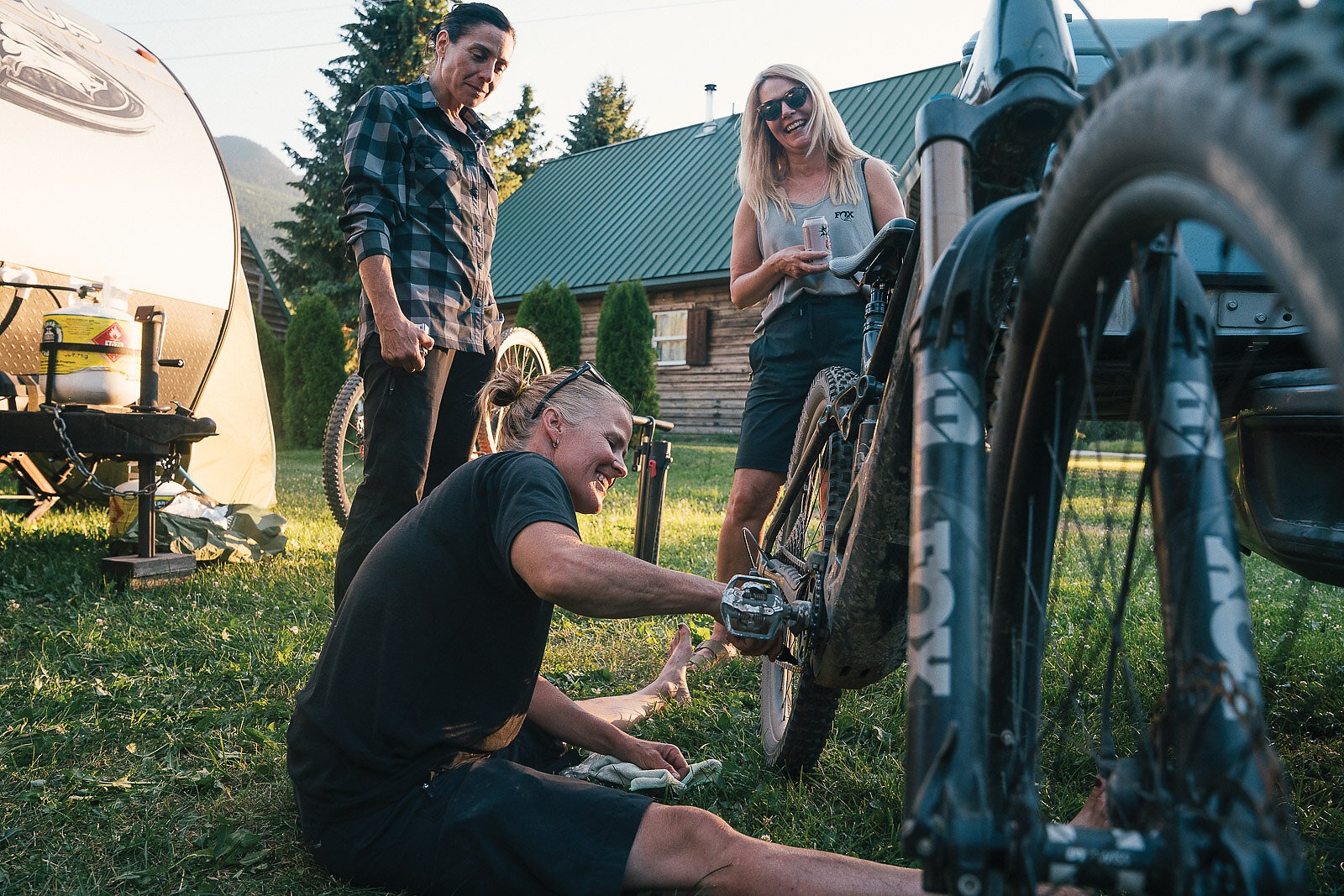
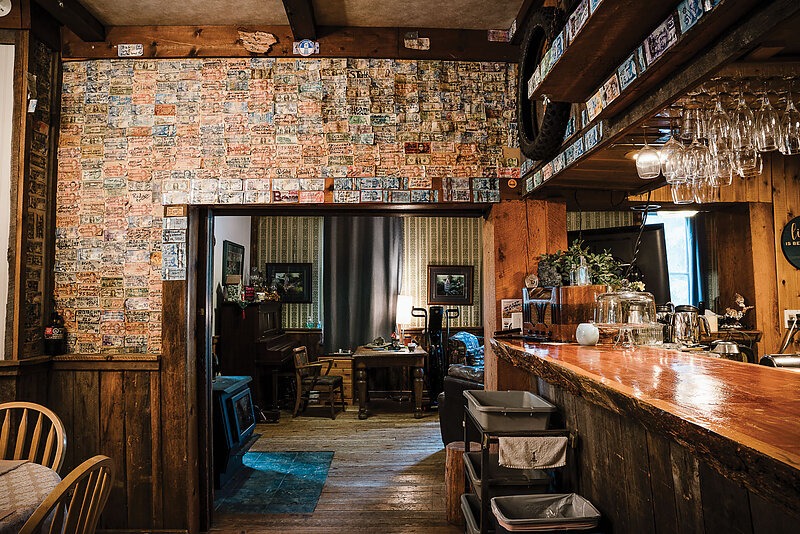
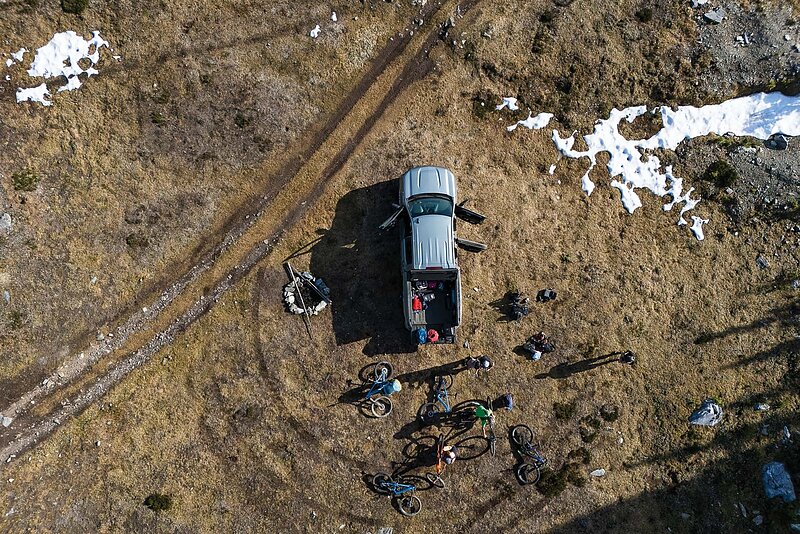
When I told the story of Alice and the Silvercup to my dear friends, Jen Zeuner and Anne Keller, they were instantly in. Women entrepreneurs themselves, and founders of the infamous Hot Tomato Pizzeria in Fruita, Colorado, they too were intrigued by this trailblazing community builder and of a mountain woman who lived in a man’s world in the wildest west. They committed to driving up to BC for a mid-July trip to Trout Lake.
A decades-long riding buddy from Nelson, Chris Lawrence, known around here as “Larry Lunchbox,” was with me on that initial trip years ago, he was also in for the full pull once dates were set. Rounding out our riding crew was another good friend, Kim Jacques, a Quebecois transplant now living in BC. She’d be a strong asset to this outdoor adventure, both in riding and entertainment.
In BC’s interior, shuttles, or “truck bumps,” up forest service roads are essential to gaining access and elevation. We assembled a ground crew to handle logistics, food, and dog-wrangling while we explored the high country. Jen Stanger, a close friend and former heli-ski guide from the area (who’d joined our initial scouting trip), would be invaluable in managing transfers, pickups, drop-offs, and campfire sing-alongs. Brenda McIntyre, an adventurous and up-for-anything friend from Vancouver Island, put her time to excellent use. She connected with locals and unearthed historical tidbits and places that we wouldn’t have found otherwise. Larry’s partner, Charita “Charity” Barbour from Castlegar, took on the crucial role of afternoon ice cream runs and truck drop assistance.
Alice’s arrival at Trout Lake was far more storied than ours. Her journey there in 1896 was a culmination of events that began across the ocean in England. A 36-year-old widow with three young children in tow, she set sail for Canada after losing her husband. When she landed in Vancouver, her money ran out and she needed to find work pronto. Drawing on the confectionery skills she learned in England, she put those talents to work and eventually opened Vancouver’s first bakery on Cordova Street. Her cakes, breads, and pies quickly became legendary.
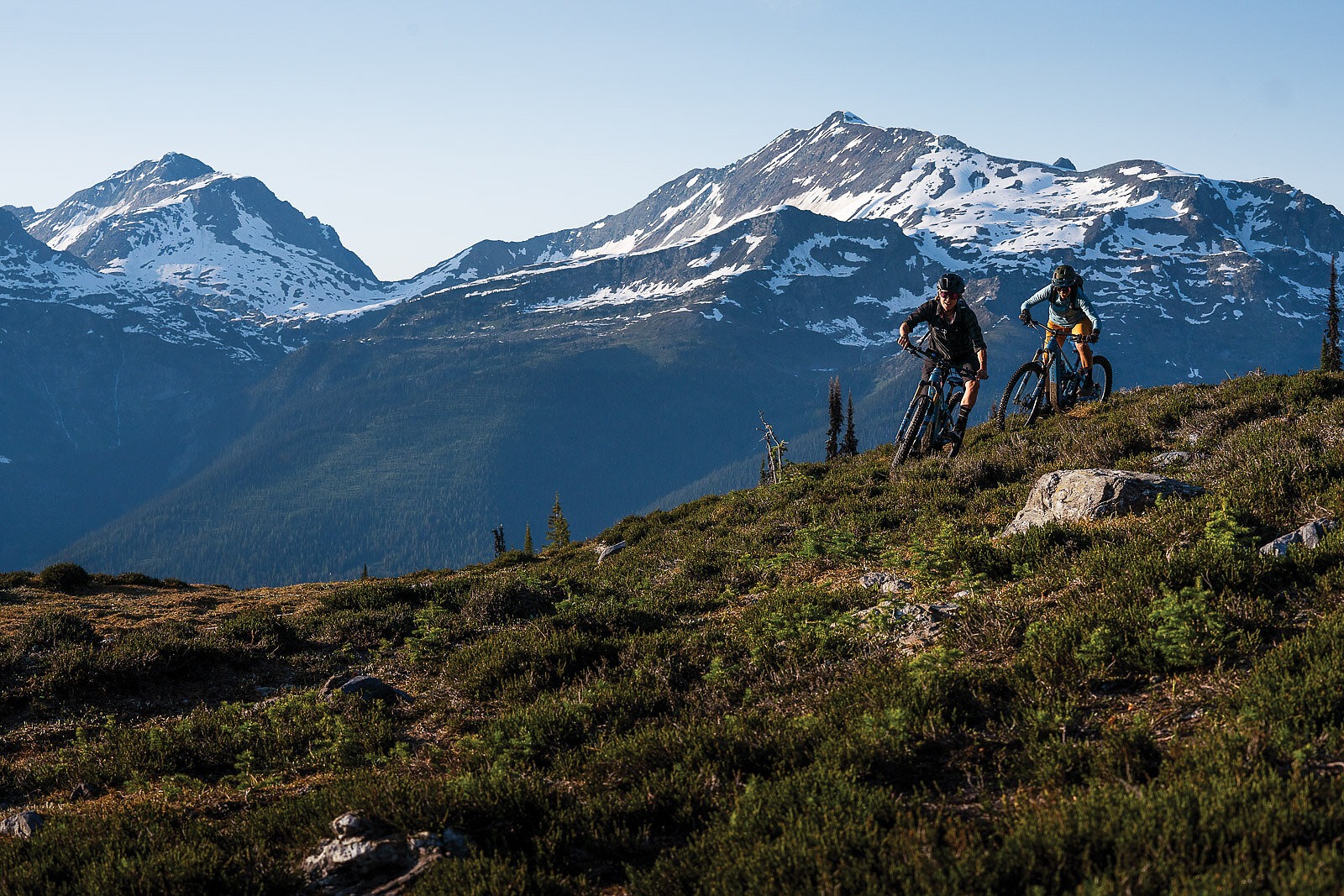
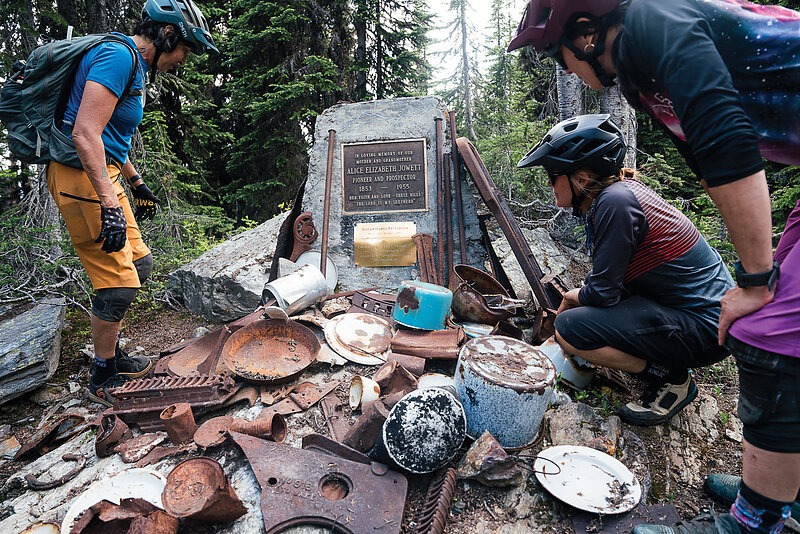
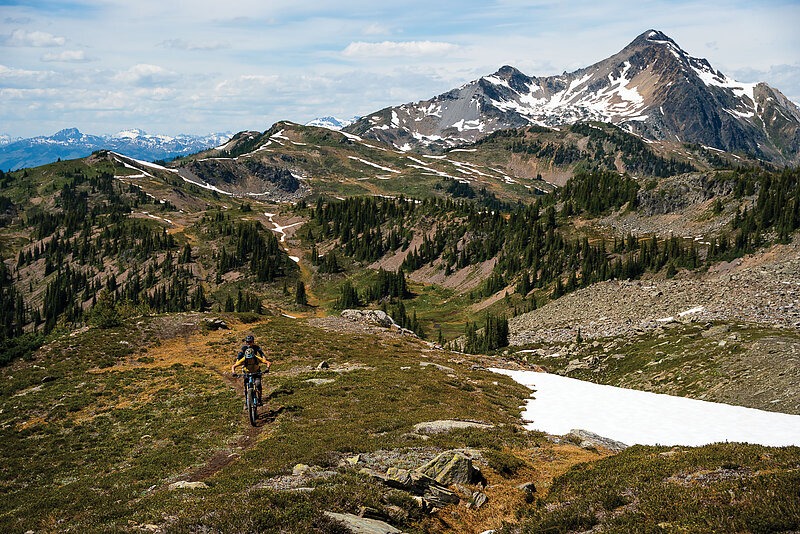
She was a woman ahead of her time, a culinary trailblazer who, by feeding weary travellers on Sundays, clashed with the laws of the era. Charged and fined for the crime of serving on the Sabbath, she became a symbol of resistance against outdated social norms. Even the Vancouver Daily World newspaper rallied to her defense, questioning the very foundation of these restrictive laws. The bureaucracy she found herself in fueled her desire for a new frontier away from the nonsensical constraints of city life.
Lured by gold rush tales and huge mountains, Alice and her three children left Vancouver for the burgeoning mining town of Trout Lake. Not long after arriving, she bought the Trout Lake City Hotel, a small two-story log building. Alice’s culinary skills, combined with her unwavering hospitality, once again earned her widespread acclaim. After nearly a decade in Trout Lake, she finally realized her dream, acquiring the Windsor Hotel, a grand, three-story, wooden-frame building, with distinctive dormer windows and elegant furnishings. It stood just across the street from the humble establishment where she had first begun.
These days, Trout Lake is a quiet community with fewer than 40 full-time residents—quite a contrast from its population peak of 2,000 in the late 1800s. The current owners of the Windsor, Brian and Lisa Prochnavy, are a retired couple in love with Trout Lake from years prior. They wanted to continue Alice’s tradition of exceptional service and mountain exploration. The evening before our ride we pored over Brian’s table-sized paper maps of the region. He showed us the various trails and roads that traverse the length of the Silvercup Ridge at differing elevation levels. Even with digital maps, trails often disappear into scree or simply peter out. Looking at the elevation profiles, and without knowing the trail conditions, we decided the best way to complete the entire ride was to break it up into two days.
After breakfast the next morning, Charity chauffeured the five of us up the aptly named “Dirt Road” until it eventually dead-ended. The entry point was shrouded by a thick, overgrown curtain of alders where Brian had started brushing the week before. This was our launchpad and entry point for day one.
At Brian’s request, at the beginning of the trail, we tossed his cut branches to the side and then started the relentless, steep climb that would take us to the ridge. The mostly bench-cut trail was an obstacle course of blowdown and washouts, forcing us to shoulder and heave our bikes over logs that crisscrossed the trail. Larry led the charge up front, snapping or dragging the fallen trees that blocked our way, some moveable, some not.
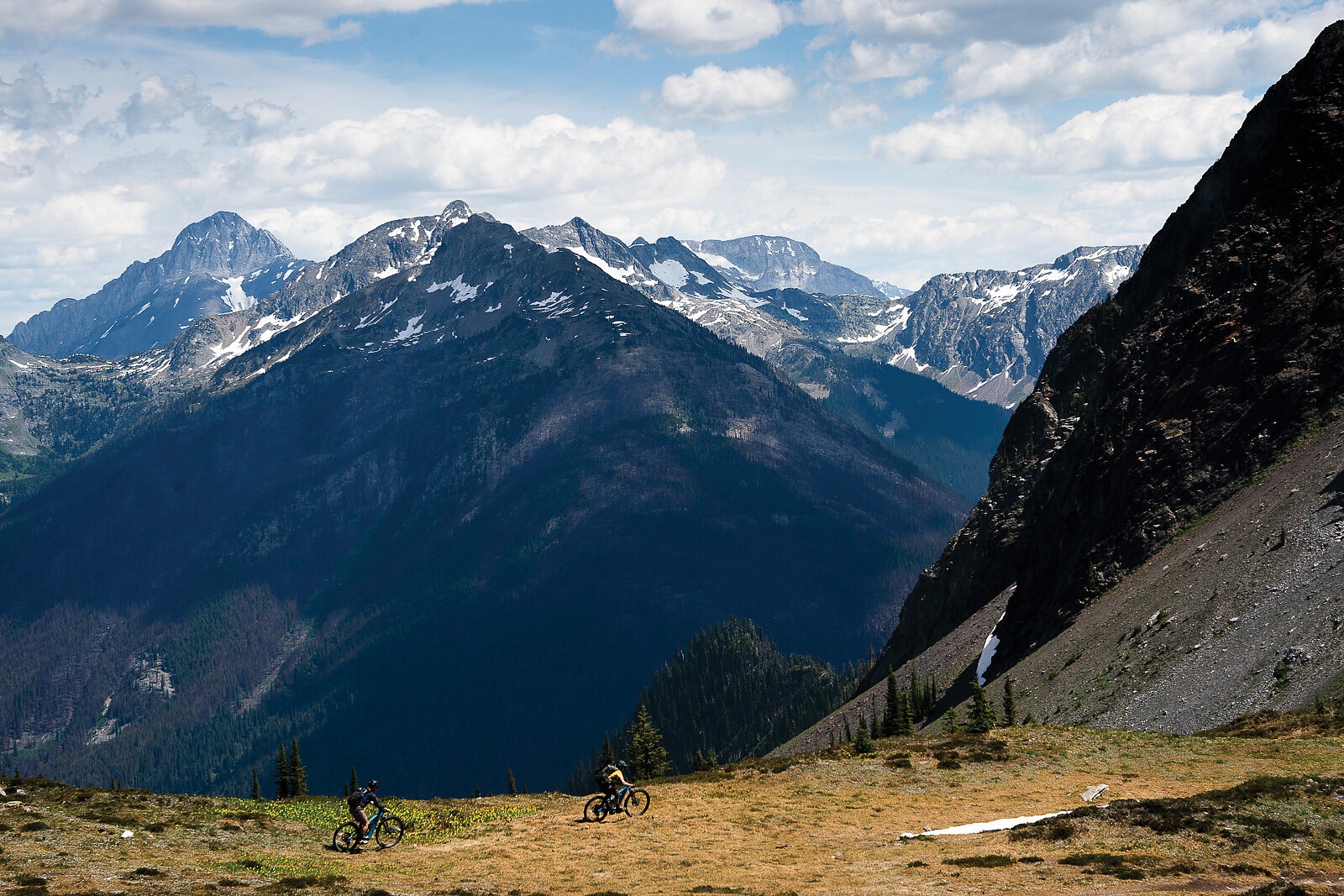
The thick fern sections were neck high as we navigated the barely visible trail beneath our tires. The going was slow, slippery, and barely rideable at times. On one section of the climb a tree was strewn across the trail at an awkward angle with dead branches flared out in all directions. Grabbing one of the branches, Larry started pushing and pull- ing it back and forth, using momentum to hopefully break it off to give us a better pathway through the snarl. As it suddenly broke under his weight and snapped off, he fell backwards to the ground with his hand over his face, moaning in pain. From my vantage point, it looked like the branch had broken off and punctured his eye. After a few moments of horror, we saw that it missed his eye and whacked his forehead, stunning him for a good minute or two. After 20 minutes of assessment, Larry and his goose egg decided they were good to go.
As we climbed higher, the alpine basins and peaks unfolded before us. Below, a panoramic view of Trout Lake with the Monashee Mountains in the background. Every 100 meters of elevation gain revealed a slowly changing ecosystem—trees smaller, horseflies bigger, and the soggy sub-alpine terrain more prevalent. As we crested the ridge, the massive granite spires of the Bugaboos to the east were flashing their tips. BC is bigger than any U.S. state outside of Alaska, and the enormity of its mountain ranges and sub-ranges are as impressive as any on Earth. The trail went on through the undulating alpine, still strewn with patches of snow. Small creeks meandered through the meadows from the glacial melt up high. Every alpine basin presented new views and visuals of the trail far off into the distance.
We were constantly re-evaluating the route as we came across multiple intersections, either access routes to alpine lakes or viewpoints. After several scree field traverses and punchy loose climbs, we dipped back down into treeline, tight and twisty, with little to no line of sight. Our grizzly bear awareness plan consisted of playing reggae over an external speaker on my backpack. You need to make your presence known here.
Deeper in the trees and further down the mountain, we rounded a bend and came across Alice’s memorial. Here, a gentle stream and lush meadow shape the foreground of a monument dedicated to her legacy. Her ashes are spread in this area near her beloved cabin that has since burned down. We spent quality time here, reflecting on this humble, hardworking, and courageous woman. Even into her 80s, she continued to explore these mountains on horseback and foot with family and friends. Miraculous when you consider the ruggedness of this area.
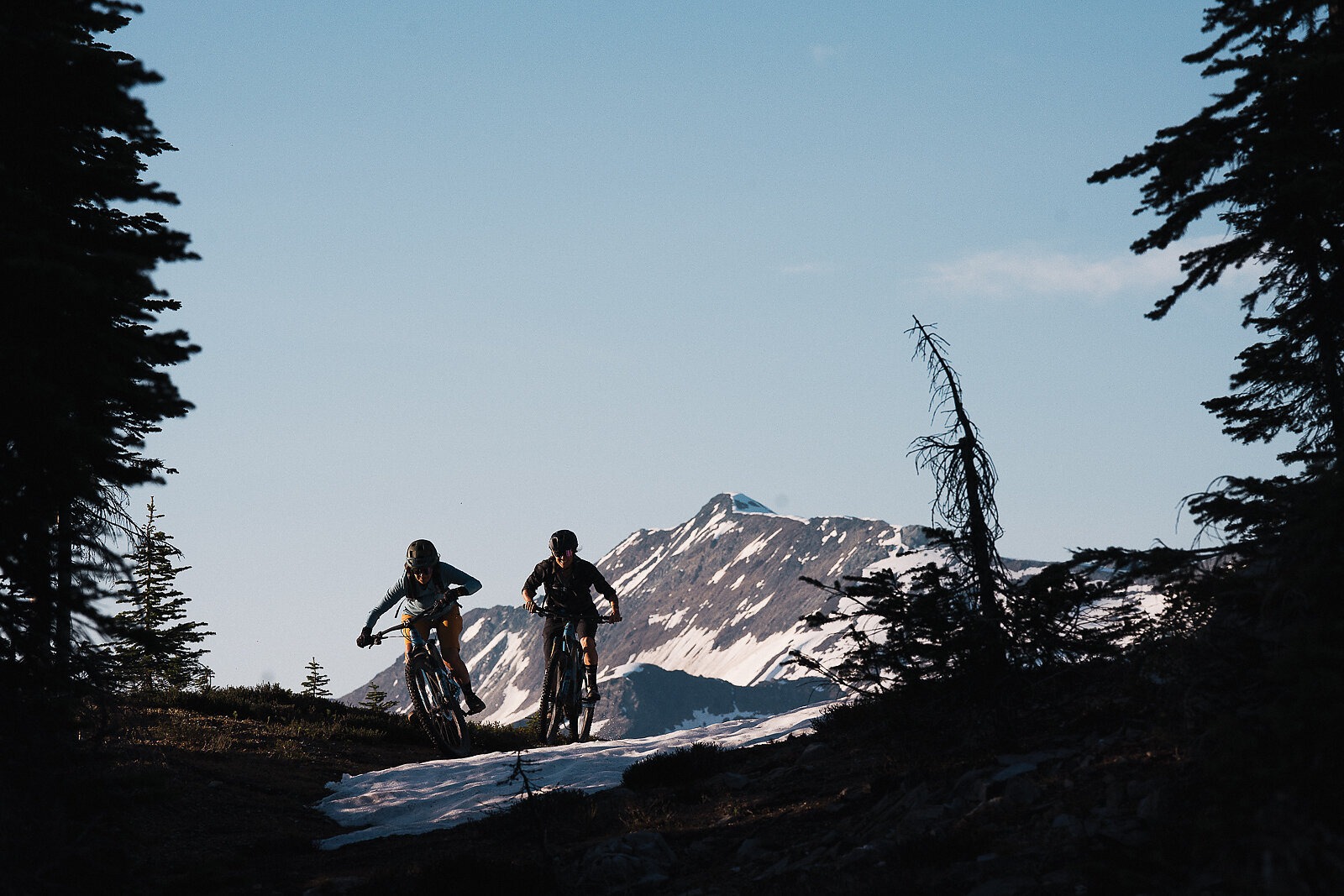
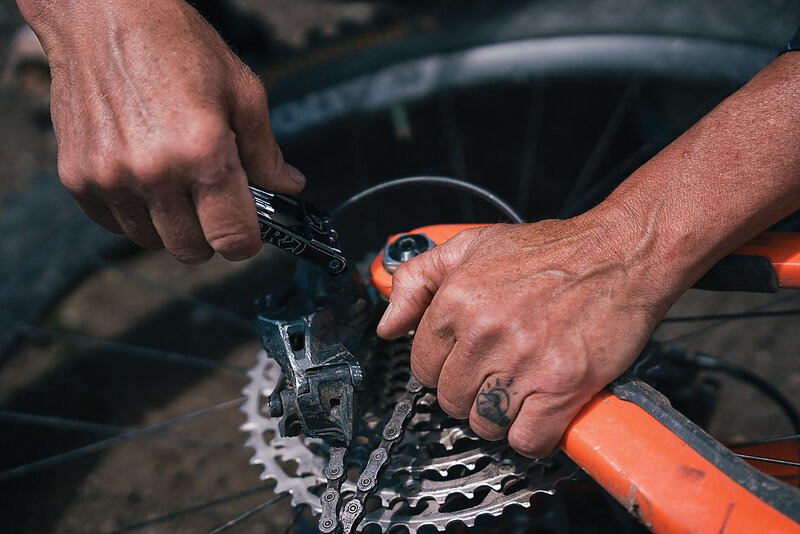
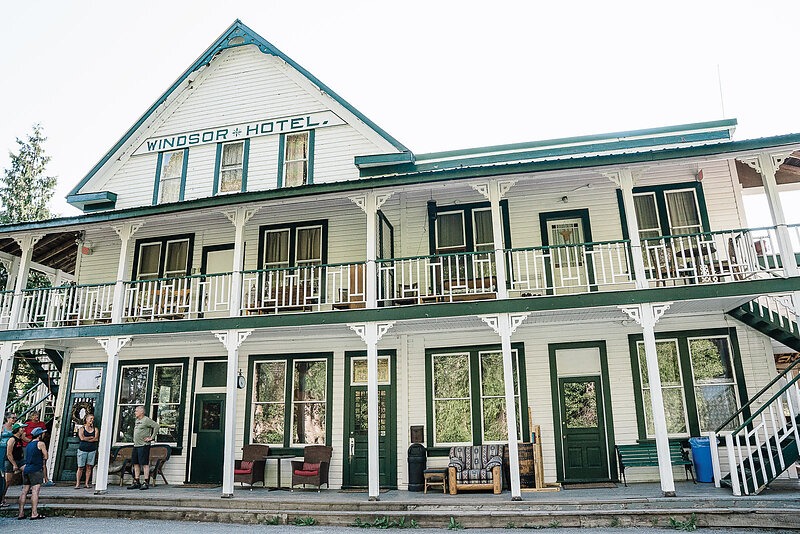
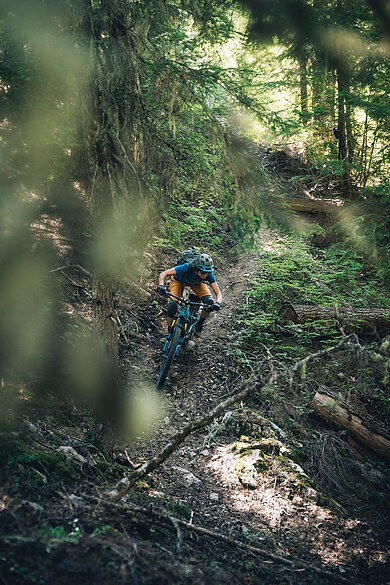
Back on the bikes, we started working our way toward Rady Road, a loose, steep, rocky FSR that would drop us back down to the valley floor. A few more exposed scree slopes later, we left the singletrack and found the top of Rady, descending almost 4,000 feet of elevation before we landed back at my truck, so kindly dropped off by our ground crew. After six hours and nearly 20 miles, with 4,144 feet of climbing and 4,468 feet of descending, we hugged each other hard in celebration and headed for the Windsor.
Dinner was cooked by our crew, and anyone returning home hungry from an all-day epic can appreciate the luxury of rolling up to a delicious home-cooked meal. The next morning, despite his prowess on the guitar the night before, Larry’s pounding head led him to opt out of day two. Saddened to lose him but fully understanding his situation, we were down a member but decided to forge on as a foursome.
Round two started with another truck bump, this time up Le Beau FSR, another access toward the ridge that would put us right where we left off. This section of trail was completely new to me, I hadn’t accessed it on the scouting trip years earlier, and the GPS track I was given for this section wasn’t complete.
Driving a few thousand feet up Le Beau, we unloaded gear and started the journey to the more unknown section of the Silvercup. The beginning of the ride was more welcoming than the day before—alpine lakes flanked the trail, and huge open meadows gave sight to the peaks again. The ridge trail here was an even series of climbs and descents as it dotted its way southward toward American Creek.
After a while, the dreamy meadows turned rockier, and the mindlessness that comes with cruisy terrain ended abruptly. Kim’s rear derailleur exploded off her hanger, and the trail we were on suddenly ended at a glacier of all things. There was no way around it or over it. We were stifled. Kim’s bike rolled just fine, but she had neither power nor a chain, and she was getting tired of pushing her bike around as we tried different routes.
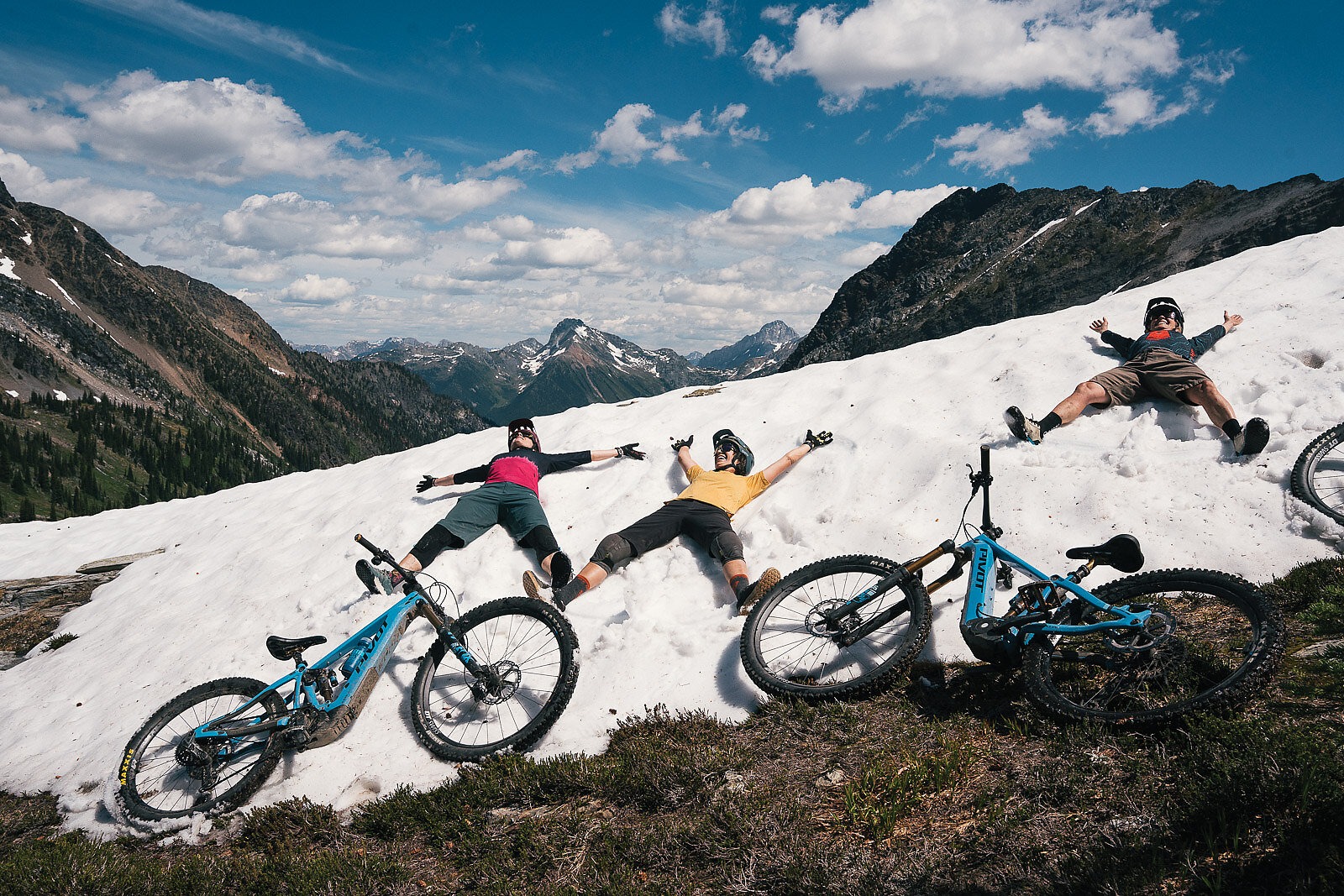
Several of the options we tried simply dead ended. We hiked our bikes out from where we went in at least six times. Feeling exasperated, Anne suddenly blurted out: “I know! Fly your drone—let’s see where we’re at!”
Thankfully, we had just enough battery power to make one last flight. Within seconds of being airborne, we had visuals of the trail in the basin below us and the safe access route to get us there. Through a notch, we descended to the trail that would take us to the top of the American Creek FSR.
I towed Kim on the last few climbs of the descent with an inner tube attached to her stem and my seat rails. It’s a well-known fact that in these mountains you must go up to get down, even from the top. Eventually, we found our way to the FSR and, for eight miles, we zig-zagged our way down to the truck, hollering nonstop as each switchback presented a potential surprise bear encounter. When we finally landed at the truck, we dropped the bikes, hugged, and had a holy fuck moment— was that the best trail you’ve ever ridden or what? Feeling proud of our accomplishment, the mission was complete.
Back at the Windsor that night we celebrated with cold IPAs and stories of the ride. A firsthand experience of the difficulty and magnitude of this terrain had us cheering on Alice, who was likely lingering somewhere in the hotel, listening to our banter.
In 1946, at 93 years old, Alice reluctantly sold her beloved Windsor, long after the boom time of Trout Lake had passed. Even when the town started to fade and business slowed, she stayed far longer than it made economic sense, refusing to lower her standards regardless of the times. She celebrated her 100th birthday in 1953, before her final year in ‘55. Her never-ending passion for the mountains inspired our own trip, underscoring the fact that adventure transcends time. On the way home we already started planning next year’s trip—so much more to explore, in the footsteps of Alice.
